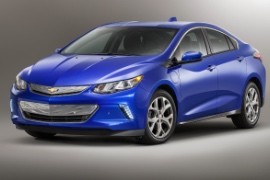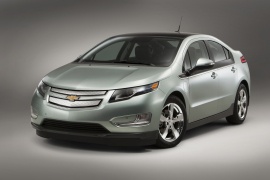CHEVROLET Volt Models/Series Timeline, Specifications & Photos
First production year: 2011
Engines: Hybrid, Electric
The second generation of the Chevrolet Volt still struggled to find its way on the market, offering a different concept of hybrid vehicles when compared with the Prius or other hybrids on the market.
While the first generation of the Volt didn't have the expected sales, the GM understood which were its flaws and acted accordingly, fixing most of the problems on the second generation.
The exterior styling of the first generation was bold and revealed a thinking outside-the-box for the GM designers. The 2017 model though, didn't have the same bold look. Somehow it was sort of an Opel Astra Sedan from Europe, but with a different rear-end. The front doesn't look that much different from other vehicles. If some would remove the bow-tie Chevrolet logo, it would be considered something like a Toyota or Hyundai.
Inside, the quality was improved. The GM understood that it cannot ask too much money for a car that has a cheap plastic interior with a very low-quality man-made leather upholstery. The second generation was far better, with a new infotainment system, with Bose speakers offered as an option. A cheap piece of plastic material was hanged between two bars as an in-trunk cover. And that wasn't nice.
The first generation had an electric motor and it was slow. It wasn't near close to what an electric car should be in terms of acceleration. The second generation though had better performance due to its two electric motors and longer range due to its newly developed batteries, which are lighter by 9.8 kg (21 lbs). The improved dynamic helped the car get to 60 mph (97 kph) in under 9 seconds.
After the world started to recover from the world economic crisis, the car-manufacturers started to recover. In 2011, GM introduced the Chevrolet Volt, also known as the Opel Ampera.
The world economy was not completely recovered, but GM didn't want to wait any longer. It already showed the concept-car in 2007. It was the first plug-in hybrid on the market and it didn't want to lose that advantage over one of their competitors. To cover a bigger part of the pie, GM introduced the Chevrolet Volt as Opel Ampera in Europe, Vauxhall Ampera in the U.K., Holden Volt in Australia and New Zeeland and Buick Velite 5 in China. It was the first plug-in hybrid world car.
The exterior design featured an aerodynamic silhouette, with flushed to the bodywork elongated headlights and raked grille. The grille design was more of a look than of an opening. Since the gasoline engine was a small, 1.4-liter unit, it didn't need a big radiator. The battery pack ran through the center of the car, thus preventing a rear bench seat.
Despite being an expensive vehicle, the Volt featured a cheap interior that affected the sales. The technology inside the car was expensive so, in order to keep the price as low as possible. Chevrolet didn't pay too much attention to the details. But the car featured all the comfort elements for a modern car fitted as standard, including a climate control system, heated seats and two displays for the instrument cluster and for the infotainment system. The latter was also used for power management.

